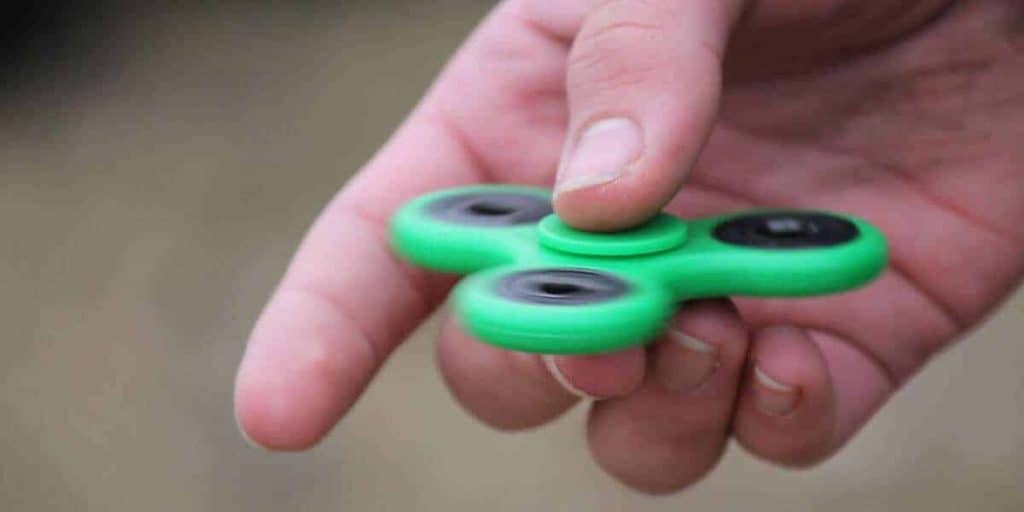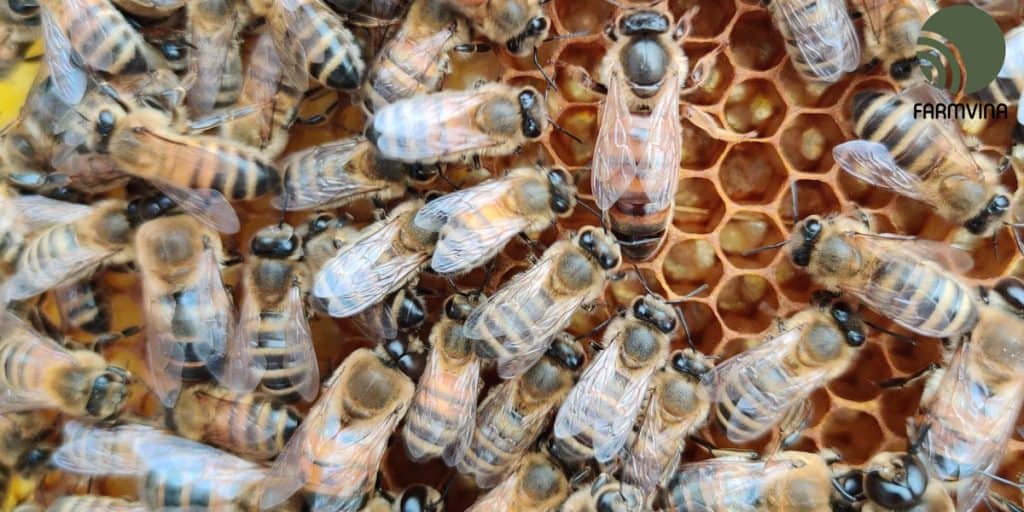Keeping bees is a fascinating activity, and like most activities, there are a few things you need to know to keep bees in a way that is safe and enjoyable. There are three main risks specific to bee farming basics:
1. Bee stings
2. Burns and fire hazards from the use of your smoker
3. Injuries from lifting and moving your hive Prevention is always better than cure, so here are some guidelines to assist you to keep bees safely, plus information about what action to take if things go wrong.
WARNINGS
• If you have a diagnosed severe allergic reaction (anaphylaxis) to bee stings, it is strongly recommended that you do not keep bees.
• If you have suffered an allergic reaction to bee stings previously, please consult with your doctor before considering beekeeping. Further stings have the potential to be life threatening as allergic reactions may be cumulative.
• It is strongly recommended that you complete a First Aid course, including anaphylaxis and CPR training before you begin beekeeping.
• It is also suggested that you join a local beekeeping club to keep up to date with best practice, and to become proficient at the tasks involved.
• Consider carrying an adrenaline auto-injector such as an Epipen, or your country’s equivalent, at all times whilst bee- keeping, regardless of your history of allergic reactions.
• We recommend that you conduct your beekeeping activities with a friend.
• It is also recommended that all beekeepers print out and display an Anaphylaxis Action Plan (download HERE) near their hives.

1. Bee Sting First Aid
Bee stings are an inevitable part of beekeeping, but there are some steps you can take to try and reduce the risk of stings.
The following suggestions will not guarantee that you will not be stung, bees can and will sting through protective clothing and despite any preventive steps, they are intended only to reduce your risk.
Bee Sting Prevention
DO
• Wear protective clothing including shoes and be aware of bee sting risks away from the hive, for example when walking over clover or other flowing ground plants.
• Always have someone with you when working with your bees, if something goes wrong they can help you.
• When purchasing bees consider temperaments of different strains of bee. Spend time getting to know your bees, and learning from your beekeeping club how to recognise signs of aggression.
• Ensure watches, rings etc. are removed or covered.
• Wear a protective veil while beekeeping, ensuring that the veil isn’t brushing against your face.
• Tie up and tuck away long hair to prevent bees becoming entangled.
• Inform neighbors when you are considering installing a hive, and when you are opening and harvesting your hive.
• Tend to your hive on warm, still sunny days.
• Ensure your bees have a constant supply of fresh water close by.
• Use slow, considered movements around bees.
• Join a beekeeping club, particularly if you are a beginner, to be supervised by experienced beekeepers.
• Always have a mobile phone with you in case of medical or fire emergency. Do not hesitate to call your country’s emergency phone number.
• Use a bee brush or similar equipment to move bees off frames or equipment.
DON’T
- Don’t wear dark, brightly coloured or woolen clothing.
- Don’t work with your bees when you are alone.
- Don’t become complacent around bees, even those you know well as they all bees can become aggressive unexpectedly.
- Don’t wear perfume, strong deodorants, aftershaves or hairspray and remain clean of animal and fuel odours.
- Don’t place your hive in areas that require regular mowing, or are close to regular use of power tools or machinery.
- Don’t place your hive near public thoroughfares, schools, playgrounds or other people/animal-filled areas. Consider bee flight paths when placing your hive, including that they will be attracted to lights at night.
- Don’t tend your hive in very cold, rainy or windy conditions.
- Don’t leave open sweet drinks and canned beverages near hives- check them before drinking.
- Try to not squash bees. This may encourage other bees to sting.
- Don’t allow children, pets or livestock near the hive. Consider fencing off your hives.
- Don’t become complacent. Anaphylaxis, although relatively rare, can be sudden, unexpected and lifethreatening.
- Don’t blow bees off equipment or breathe heavily
If You Are Stung By A Bee
• Remove yourself from the vicinity of the hive.
• Remove the stinger. Pulling the stinger out may squeeze more venom in, so scraping the stinger out is the preferred method. Fingernails, a car key, a credit card or similar can be used. It is preferable to remove the stinger within 30 seconds of being stung. Apply a cold pack wrapped in a cloth to the sting site.
• Oral antihistamines may assist with the itch if it is persistent.
• If you have an adrenaline auto-injector (such as an Epipen) you should locate it in case your symptoms worsen.
• Be aware that antihistamines will not prevent or treat anaphylaxis, the most severe form of allergy (see next page). The ONLY pre-hospital treatment for anaphylaxis is adrenaline.
When stung by a bee, the vast majority of people experience a normal reaction immediately following the sting. Some people may experience mild to moderate symptoms that develop immediately or over several days following the sting.
Very large and uncomfortable areas may sometimes need medical attention and anti-inflammatory tablets to settle the swelling. A small proportion of the population experience a severe allergic (anaphylactic) reaction to bee stings.
These reactions usually happen within seconds to minutes; but in some, (rarely), cases can also occur up to several hours after the sting.
WHAT IS ANAPHYLAXIS?
Anaphylaxis is the most severe form of allergy and is a lifethreatening medical emergency in which the person’s tongue and other parts of the airway may swell up, breathing may become difficult or in the worst cases, the person may stop breathing altogether.
Anaphylaxis may also result in a dangerous drop in blood pressure. Anaphylaxis to bee stings may include ANY ONE of the following and requires immediate treatment with adrenaline:
• Abdominal pain or vomiting
• Difficult or noisy breathing
• Swelling of the tongue
• Swelling or tightness in throat
• Wheeze or persistent cough • Difficulty talking or swallowing and/or hoarse voice
• Persistent dizziness or collapse
• In young children, becoming pale and floppy Anaphylaxis treatment – follow these steps in order:
1. Move away from the vicinity of the hive.
2. Remove the sting as quickly as possible.
3. Lay down flat or sit, do not walk or stand.
4. Administer an adrenaline auto-injector without delay. This can be self-administered however another person may administer it if required. If in doubt, always administer the adrenaline auto-injector.
5. Phone emergency services and request an ambulance.
6. Phone family/emergency contact.
7. Further adrenaline doses may be given if no response to the first dose, after 5 minutes (if available).
8. If you are responding to an anaphylactic episode in someone else and they become unconscious or stop breathing properly at any stage, perform CPR.
9. Transport by ambulance to hospital for at least 4 hours of observation.
If you are unsure if you are having an asthma attack or an anaphylactic episode, always administer the adrenaline auto- injector first, followed by the asthma reliever. If there is no adrenaline auto injector present, follow other steps above and call an ambulance immediately.
It is recommended that all beekeepers print out and display an Anaphylaxis Action Plan near their hives.
2. Safe Use of Smokers
Smokers are used during beekeeping. Smoke stimulates the bees to gorge on nectar, so they are less likely to act defensively and can be handled more easily. Smokers, like any live flame, can cause burns or start a fire.
The following safety suggestions should be adhered to in order to reduce the risk of fire and burns.
Fire Prevention
Do:
- Complete a beekeeping course to ensure competence and safety in operating a smoker. These courses can also advise which fuels to use and which to avoid.
- Know the status of local fire bans, restrictions and fire danger periods, as well as regulations covering use of bee smokers during these times.
- Do have plenty of water on hand, or a fire extinguisher, or both (this may be compulsory in some areas- be sure to know your local requirements)
- Fire box: It is highly recommended that you carry your smoker in a metal container with a handle. Army disposal ammunition containers are good but a metal bucket will also do the job. Light the smoker inside the box. When you put the smoker down or move it, do it inside the box. This is the simplest way to avoid kicking the smoker over, getting a burn or starting a fire, and it saves time too – once you’re in the habit, you will always know where your smoker is.
- Do empty the fuel and ash into a bucket of water when finished, ensuring the smoker has been completely emptied and all contents thoroughly soaked.
DON’T:
- Don’t forget that respiratory conditions such as Asthma may be triggered by the use of a smoker. Carry any prescribed medications with you when operating the smoker and keep your face away from the smoke.
- Don’t light your smoker near combustible material (have at least a 3 meter cleared area)
- Don’t use the smoker in strong winds.
- Do not set the smoker down in long grass, leaf litter or any other flammable material.
- Don’t become complacent. Fires can get out of control quickly.
Burn Prevention
DO:
- Wear gloves and pick the smoker up by the bellows.
- Always have a mobile phone with you in case of medical or fire emergency.
DON’T:
- Don’t have the hot barrel of the smoker close to you or others at any time.
- Don’t hesitate to call your country’s emergency phone number in the event of a fire.

If You Suffer A Skin Burn
Skin burns may occur during beekeeping due to contact with the live flame and heat of the smoker. Skin burn treatment – follow these steps in order:
1. Ensure safety for yourself, rescuers and bystanders.
2. Stop the burning process: Stop, Drop, Cover your face and Roll; smother any flames with a fire- retardant blanket.
3. Immediately cool burns with cool running water for at least 20 minutes.
4. If possible, remove all rings, watches, jewellery or other constricting items from the affected area without causing further tissue damage.
5. Remove wet, non-adherent clothing.
6. Cover the burn with a loose and light non-stick dressing, or cling film.
7. Cover non affected areas and keep warm to prevent hypothermia.
8. If it is possible and comfortable, elevate affected limbs.
9. Seek medical assistance if required. It is essential that you DO NOT:
• Peel off adherent clothing or burning substances.
• Use ice or iced water on burns.
• Break blisters.
• Apply any lotions, ointments, creams or powders (with the exception of hydrogel in the absence of cool running water)
If You Suffer An Inhalation Burn
Inhalation burns happen when an airway is too close to a source of heat or flame. They are an emergency that warrant an immediate call for an ambulance. Inhalation burns must be assumed when ANY ONE of the following symptoms appear:
• Burns to the face, nasal hairs, eyebrows or eyelashes
• Evidence of soot in the nose or mouth
• Coughing of black particles in saliva
• Hoarse voice and / or breaching difficulty
Do not assume you are stable following an inhalation injury because you are still breathing, talking and able to get up. In some cases, inhalation burns may take up to 24 hours to develop. It is essential that medical treatment is sought if any of these symptoms are present.
Inhalation burn treatment – follow these steps in order:
1. Remove yourself from danger and into the fresh air.
2. Do not lay down.
3. Look for the signs and symptoms of airway or inhalation burns set out above.
4. If present call emergency services and request an ambulance.
5. Use oxygen if it is available and you are trained to do so.
3. Safe Lifting
Ergonomic Injury Prevention
DO:
• Do position your hive up off the ground, (waist height is ideal for safe lifting) It is also better for the bees as it keeps the hive dry and safer from pests
• Do consider asking for help with lifting or using mechanical aids. Where possible, move your Super when it is light (e.g. after you have harvested.) Beekeepers in area of high pest or disease incidence will need to check brood boxes on a weekly basis and be prepared or the heavy lifting this will involve
• Hold loads close to your body.
• Do know your physical capabilities and how much you are able to safely lift. • Do have heavy loads positioned between waist and shoulder height before lifting.
• Do: bend your knees, keep your abdominal muscles tensed, your back straight, feet shoulder width apart and use smooth, steady movements when lifting heavy loads.
• Do be aware that injury can be cumulative and chronic. Seek appropriate medical help at the earliest possible stage.
DON’T:
• Don’t work on your hive without first assessing the weight and ensuring that you can lift it. It is important to plan ahead to minimise risks associated with heavy lifting. If possible, undertake any lifting with another person and onto a pre-prepared surface (some beekeepers use trestle table legs) to minimise bending.
• Don’t lift when you are tired, or in a hurry.
• Don’t reach forward to lift up a heavy load.
• Don’t lift, push or pull anything that is too heavy for you.
• Don’t lift loads from ground level.
• Don’t twist your torso whilst lifting and carrying a heavy load. Don’t lift heavy items when you are sitting down.
If You Suffer An Injury From Lifting Or Moving Your Equipment
Manual handling injuries can result from either a single awkward movement, or repeated unsafe movements over time, so it is important to ensure that you maintain safe lifting techniques.
Signs and Symptoms of a soft tissue injury include:
• Joint pain
• Tenderness
• Swelling
• Weakness
• A reduced range of movement
It is advisable to be assessed by a medical professional such as a GP or physiotherapist as soon as possible if you sustain a soft tissue injury whilst lifting.
Lifting injury – follow the ‘RICE’ steps in order:
1. Rest – rest in a relaxed position.
2. Ice – apply an ice pack to the affected area.
3. Compression – if the injury is to an arm or leg, apply a compression bandage.
4. Elevation – if possible, elevate the affected area.
That’s it! Safe beekeeping, happy beekeeping!
Originally posted 2020-08-01 14:54:35.





